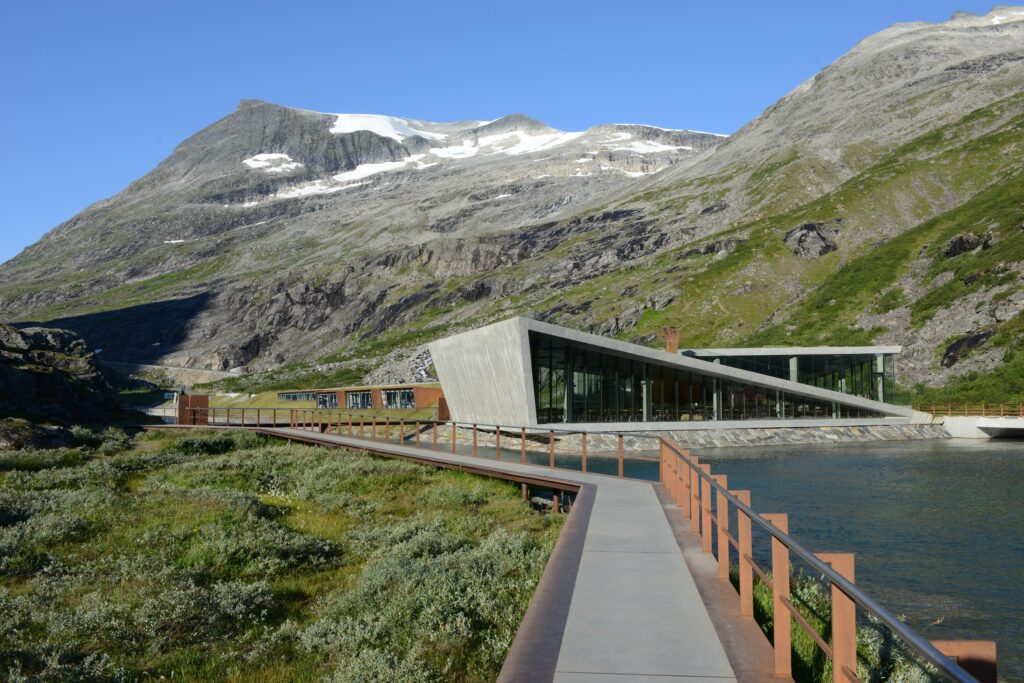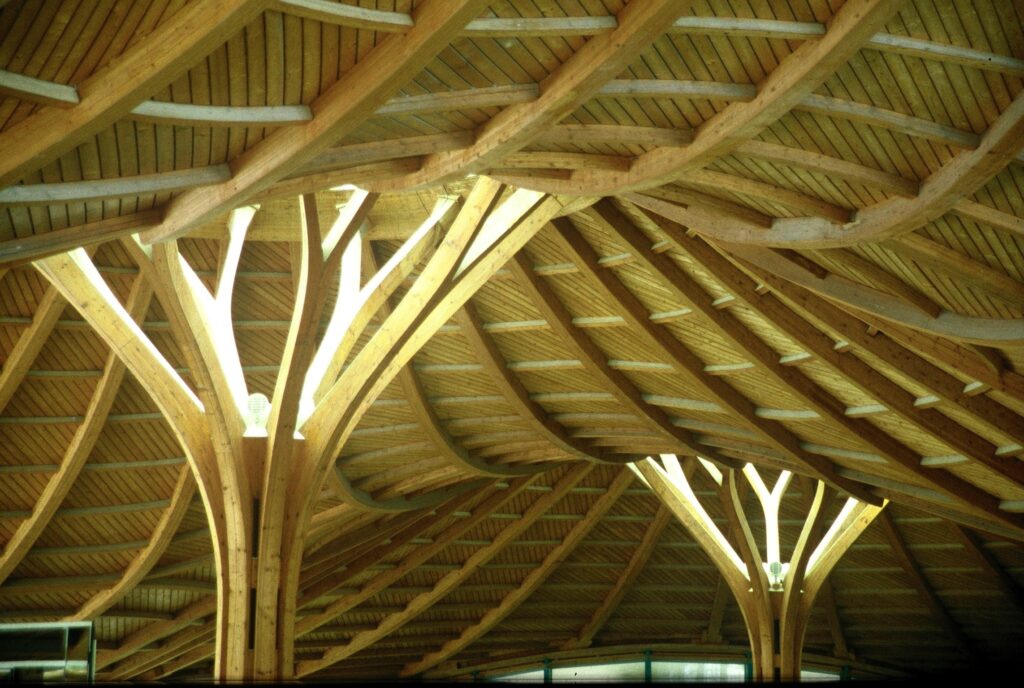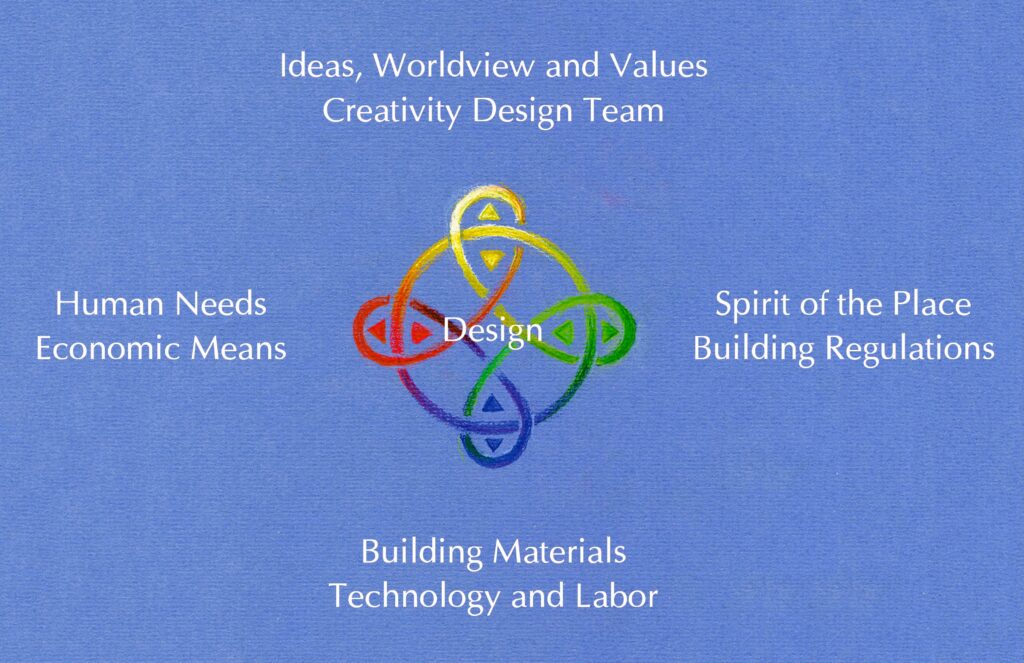Gesichtspunkte für ein 'Lebendige Architektur'
Living Architecture is not a style. It is an approach to architecture that views buildings not as mere objects, but rather as organs or organisms functioning within the highly diverse and interdependent fields of natural, social and cultural life. The goal of Living Architecture is to develop a built environment that supports and enhances the natural, social and cultural life and elevates this attitude into an artistic expression. The result should serve our needs in a holistic and sustainable way. To create a Living Architecture, the following aspects need to be taken into account, balanced and brought into a comprehensive synthesis:
Function and Human Needs
All buildings arise out of human needs and aspirations. These needs cover all aspects of human life. They range from physical protection, fulfillment of practical needs, providing social spaces and privacy all the way to offering a rich spatial atmosphere, expressing cultural content and supporting spiritual experiences.

In each building task different aspects have to be emphasized and care taken. Nevertheless, the entire scope of human needs should always be taken into account, including how buildings and public spaces affect the general public.
Good architecture primarily seeks to fulfill these needs and aspirations by serving and enhancing both our outer and inner lives.
The extent to which the client’s needs and aspirations can be realized depends upon the economic means available. In modern society money is one of the most important of these means. However, money should never become a goal in itself. Nor should architecture become a means to make financial profit at the expenses of those who will later be using the building.
Everyone who contributes to the realization of a building—as a developer, designer, contractor or workman—should be compensated fairly for his or her contribution. Not paying a fair wage is building at someone else’s expenses. At the same time, exceeding one’s fair fee or profit is letting others pay for work that is not done.
In the tension that often exists between wishes and means, the design challenge consists of accomplishing the maximum number of the client’s wishes and the future users’ needs within the limits of the available budget.
The Spirit of Place
Realizing a building requires a site. Each site has its own distinct character. This character is made up of natural components such as the morphology of the earth, the local climate and the plants and animals living on the plot. Added to this there mostly is a tapestry of social and cultural components including the surrounding buildings, the available infrastructure and the site’s history.
Good architecture consciously relates itself to this spirit of place. This does not mean it has to subordinate itself to the existing. It can also make a new contribution uplifting that which is already present, but this has to be done with respect.

A contemporary design challenge is the revitalization of deteriorated landscapes and townscapes. This can be accomplished by introducing new biotopes and appropriate spaces for social life.
In most places, building regulations and statutes are established to balance the intentions of those who want to build with the protection of natural and historical values and the interests of those already living in the area.
Such regulations should be neither too strict nor too loose so as to enable social life to flourish and architecture to develop in a harmonious manner.
In relation to the spirit of place, the design challenge consists of creating a synthesis between the future buildings spatial needs, its envisioned identity and the character of the place with its prevailing statutory requirements.

Building Materials and Construction
All buildings are made of materials that are originally derived from nature and that will, after being used, reused and recycled, eventually return to nature.
Good architecture tries to optimize the technical and aesthetic qualities of building materials and to minimize the harmful impact their production and use has on human health and the natural environment.
Regarding the use of materials and energy, a circular approach has to be developed that takes into account the entire lifecycle of a building and the impact it has on people and nature.
Awareness of the forces at work in construction and creating structures in accordance with those forces can lead to both highly efficient and expressive structures.

Technology plays a key role in optimizing the possibilities of materials and creating built structures from them. The rapid progress of technology permanently enables innovative construction methods and astonishing new forms.
However technology should never become a goal in itself, dominating the design for its own sake. Technology should always be used to support human wellbeing, good architectural quality and ecological sustainability. Life should not be mechanized, but technology brought in accordance with life processes, supporting and enhancing them.
The design challenge in dealing with materials and technology consists in bringing their potential into harmony with the human, aesthetic and technical requirements of the design, balancing them with their ecological impact.
Ideas, Values and Creativity
In the process of envisioning and designing a new building, countless ideas and intentions flow into the project. These originate in part from the client and in part from the designers, constructors, technical advisors and workmen involved in the project.
All these ideas are related to values and a worldview that—consciously or subconsciously—flow into the design. In historical styles, this was generally evident because of the mythological or religious worldview expressed in the forms. But also modernist and contemporary buildings inevitably express a vision and the values that underpin them.
When we use or see a building, we absorb these ideas and values in the form of sensory impressions.
Good architecture therefore consciously tries to bring inherent values and a worldview to an artistic expression. It does so by creating a spatial atmosphere that can support and inspire those who use and experience the building.
All these ideas and values get their visible form through the talents and creativity of the architect or the design-team. These inevitable will color the design and influence its character.
For the designers, this process is at once a form of self-expression and self-realization. Self-expression should however never dominate the needs of the future users, but be used to support them.
In regards to ideas and values the design challenge consists of creating a form that fulfills its functional, technical and aesthetic requirements and brings its content to a meaningful expression.

The Design Process
The ultimate goal of the design process is to create a convincing and authentic form in which all of the aspects mentioned above are integrated. This cannot be done by just fulfilling separate requirements and dressing the result up in a fashionable or trendy form.
To create an authentic form, the design has to be developed from the inside out, that is to say out of the design-task itself and not be polluted by alien elements added on from outside.
In order to reach this goal, all separate and often contradictory requirements have to be analyzed and thought through. They have to sink into the sub-consciousness of the designers in order to let a new synthesis be born in which all elements are brought together in a new unity.
Creating a design is rather like being pregnant; not physically, but mentally. The design has to live in the consciousness and sub-consciousness of its designers, has to be fostered to grow and achieve a life of its own. Only if a design is brought to life, gets a character and identity of its own, can it enhance the lives of those who will use it, nourish their souls and uplift their spirits.
In the resulting form, the parts of the design should relate to the whole and to each other as in a living organism.
During design processes it often can be noticed that projects have a dynamic and will of their own, not being satisfied until all aspects of the design are integrated and its own character brought to full expression.
The client, architect and design-team should try to be aware of this ‘voiceless will’ at work and try to give it free rein. It can manifest itself in problems that occur during the process. It is important to view such problems as opportunities and seek ways the building can benefit from them. This attitude can help overcome difficulties.

Supporting Life-Processes
It is in the very nature of architecture to bring human needs and natural resources, social life and art, spirit and matter into a dialogue, merging them with one another and bringing them into a specific synthesis. The result of this open and permanently renewing process forms the world in which we live and by which we are formed.

Because of the impact architecture has on our outer and inner lives and on the natural world we all live in, architecture should be conceived in relation to the life-processes which it is part of; supporting and enhancing them.
To achieve this, inspiration can be taken from Nature by understanding how it creates its highly efficient, sustainable and beautiful forms. In Nature, outer appearance and inner being always form a unity. A similar unity should be aspired to in architecture and design. A quality of soul and a spiritual dimension must be added to make any design not just natural but also truly human.